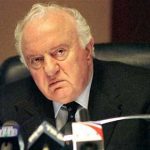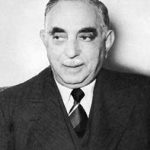I happened to see a new DVD of an old film with this title last night. It was a typical Hollywood presentation, cost a fortune, was directed oddly enough by an Englishman, Ken Annakin (but not Skywalker). The script was quite literate, the acting good as always. The customary Hollywood absence of anyone British or Canadian in scenes supposedly from the Second World War was adhered to. I remember a Spielberg epic called Saving Private Ryan in which the director even managed to make it appear that the Normandy Invasion of 1944 was entirely American. The GIs had two beaches in Normandy, and the British/Canadians etc. had three, but no hint of this appeared in the movie. It was a bit like this in The Battle of the Bulge (1965). Henry Fonda and Robert Ryan played the military heroes, backed up by James Macarthur and of course Charles Bronson and Telly Savalas and there went your first ten million dollars off the budget before the camera was turned.
The odd thing was that English actor Robert Shaw, who could act all the other stars off the screen if he chose, was in the film too. He is the archetype Nazi German officer, with a dreadful imitation German accent and all. Thank God they have stopped doing that in films now. How awful it must have been to say ‘Vor you the var is over!’
Americans are very good at making cars and movies and love but they have believed since they got involved (rather late is it happens) in the First War that in war you only need massive armament, millions of men, endless squadrons of aircraft and Bob’s your uncle. They were wrong in Korea, wrong in Vietnam and are wrong in Afghanistan. They were horribly wrong in the Battle of the Bulge.
It was the largest pitched battle in American history, and it came about because Hitler would not accept the War was over in the middle of December 1944; he launched an offensive involving half a million tired, over-young or aged German troops. He thought he could stop the massive Allied advance towards Berlin. He had more than 600,000 US troops against him but that sort of thing had never worried him very much.
The Allies were preparing to cross the Rhine, as they thought the War was over too. No commander believed the Germans would be capable of mounting an offensive against them, but everybody had forgotten that after those famous dams were blown up flooding the industrial Ruhr, the Germans had them repaired within a few weeks. This kind of impossible miracle is part of the Teutonic myth. Allied leaders were certain Hitler would not use his last reserves in such a desperate gamble. But he did.
Advancing at the usual pace through the Ardennes, he aimed to divide the British from the American armies, cross the Meuse and move north to take Antwerp whose importance as a port cannot be forgotten. The weather was abominable and Hitler’s generals used this to their advantage. No allied aircraft could get through the icy fog. The German forces bashed a bulge in the US lines (hence the name of the battle), separated two American armies successfully, and completely surrounded the US troops at Bastogne, which was a road junction and an important one.
Were it not for the fact that the Germans had little fuel for the Panzers, and not much chance of finding any more, they might have won at Bastogne, where the situation was greatly difficult for the Americans. When the Germans had been reduced to using horse-drawn transport to attempt a rally with more petrol however, the skies suddenly cleared and Allied fighters and bombers could at last do their job.
Bernard Montgomery moved at lightning speed to stop his enemy crossing the Meuse on their way to Antwerp. George Patton moved even quicker than Montgomery, racing his armoured columns from Alsace to Bastogne in record time, relieving the stricken Americans on 2 January, 1945. By 7 February the ‘bulge’ or in military terms ‘salient’ had been removed. 81,000 US troops were lost killed or wounded. The Germans had as many casualties or more, but they also lost valuable tanks and aircraft which could not now be replaced. It was now impossible to halt the Allied rush to Berlin. That would be effectively expedited by US future President Eisenhower, who stopped Montgomery and Patton and other commanders, in order to permit Stalin’s Russians to enter Berlin first (q.v.). In previous posts on this site we have commented, not always sympathetically, on this bizarre decision, which resulted in the partition of beaten Germany and Austria into four zones; the division of Berlin into four sectors, the cruel creation of West and East Germany, the Berlin Airlift, the Berlin Wall, the Cold War and hundreds of thousands of deaths during the post-War period.











Leave A Comment